CAT 2019 DILR - Slot 1 Past Year Questions
CAT 2019 | DILR Set 1
The following table represents the addition of two six-digit numbers given in the first and the second rows, while the sum is given in the third row. In the representation, each of the digits 0, 1, 2, 3, 4, 5, 6, 7, 8, 9 has been coded with one letter among A, B, C, D, E, F, G, H, J, K, with distinct letters representing distinct digits.

1. Which digit does the letter A represent?
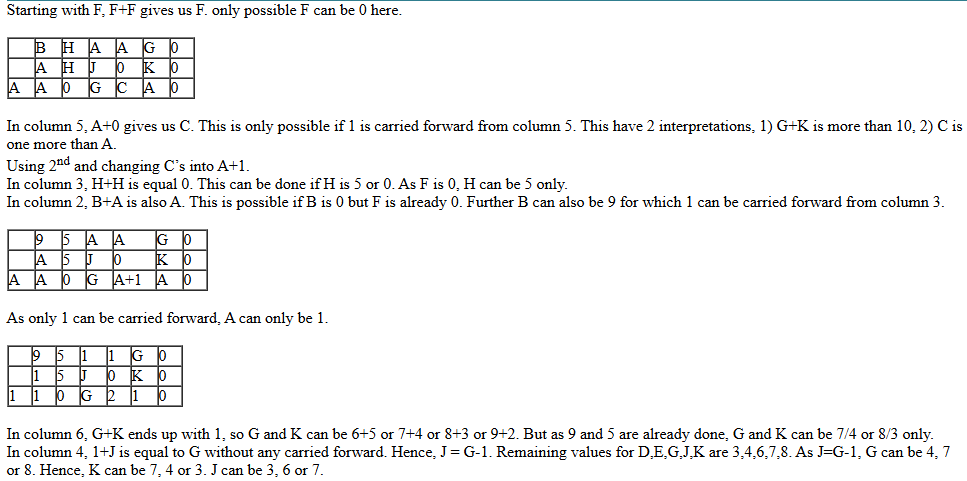
2. Which digit does the letter B represent?
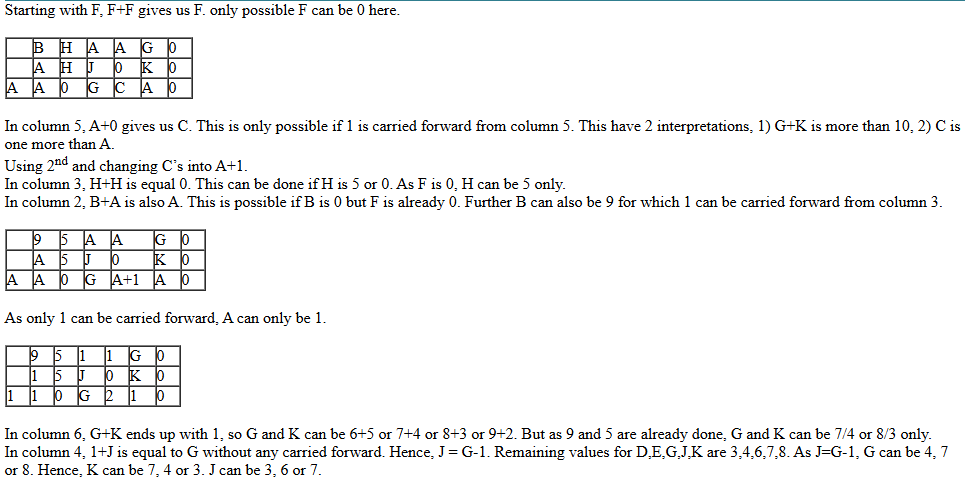
3. Which among the digits 3, 4, 6 and 7 cannot be represented by the letter D?
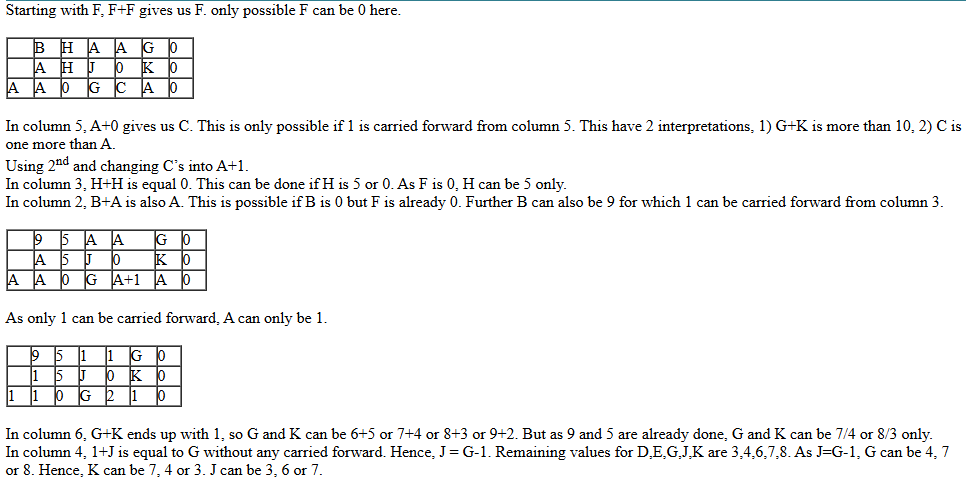
4. Which among the digits 4, 6, 7 and 8 cannot be represented by the letter G?

CAT 2019 | DILR Set 2
DIRECTIONS for the question: Read the information given below and answer the question that follows.
Princess, Queen, Rani and Samragni were the four finalists in a dance competition. Ashman, Badal, Gagan and Dyu were the four music composers who individually assigned items to the dancers. Each dancer had to individually perform in two dance items assigned by the different composers. The first items performed by the four dancers were all assigned by different music composers. No dancer performed her second item before the performance of the first item by any other dancers. The dancers performed their second items in the same sequence of their performance of their first items.
The following additional facts are known.
- No composer who assigned item to Princess, assigned any item to Queen.
- No composer who assigned item to Rani, assigned any item to Samragni.
- The first performance was by Princess; this item was assigned by Badal.
- The last performance was by Rani; this item was assigned by Gagan.
- The items assigned by Ashman were performed consecutively. The number of performances between items assigned by each of the remaining composers was the same.
5. Which of the following is true?
- The third performance was composed by Ashman
- The second performance was composed by Dyu.
- The second performance was composed by Gagan
- The third performance was composed by Dyu
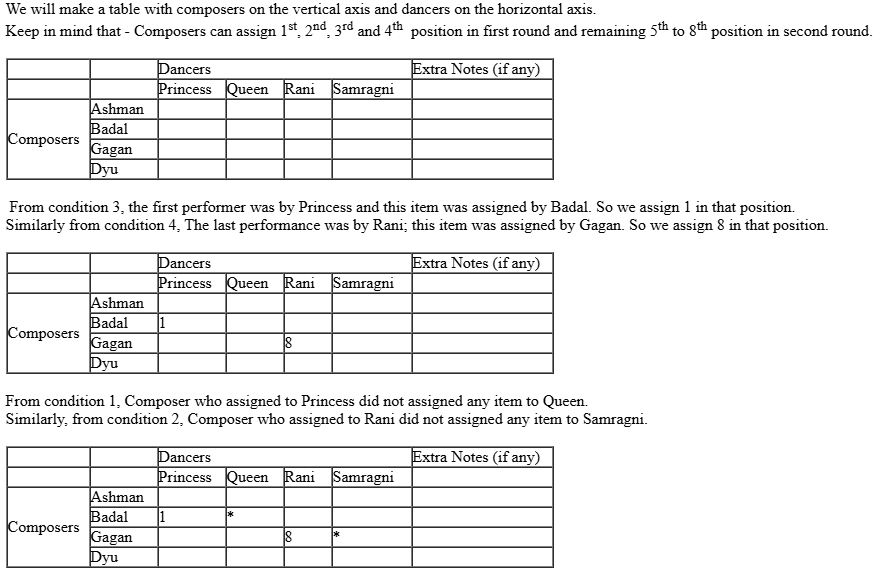
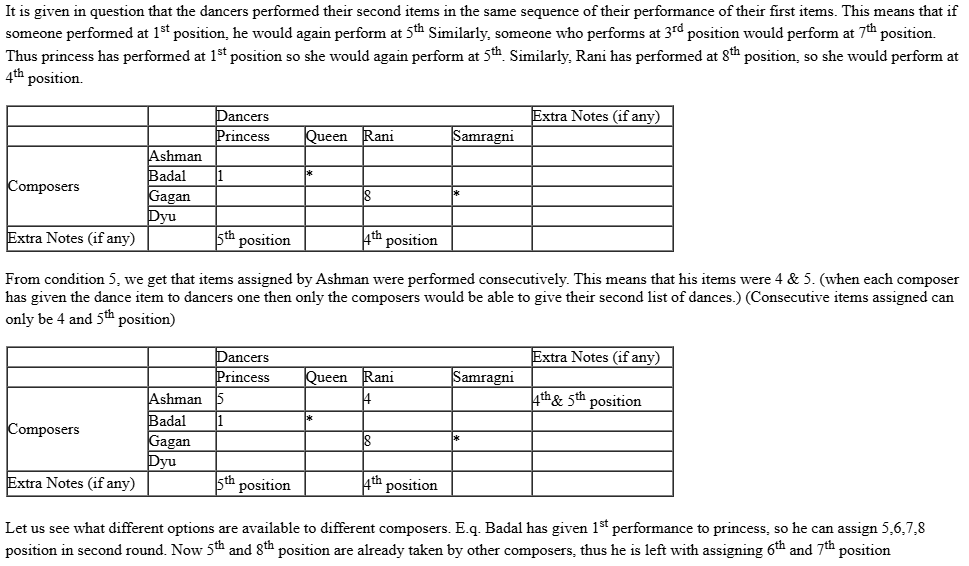
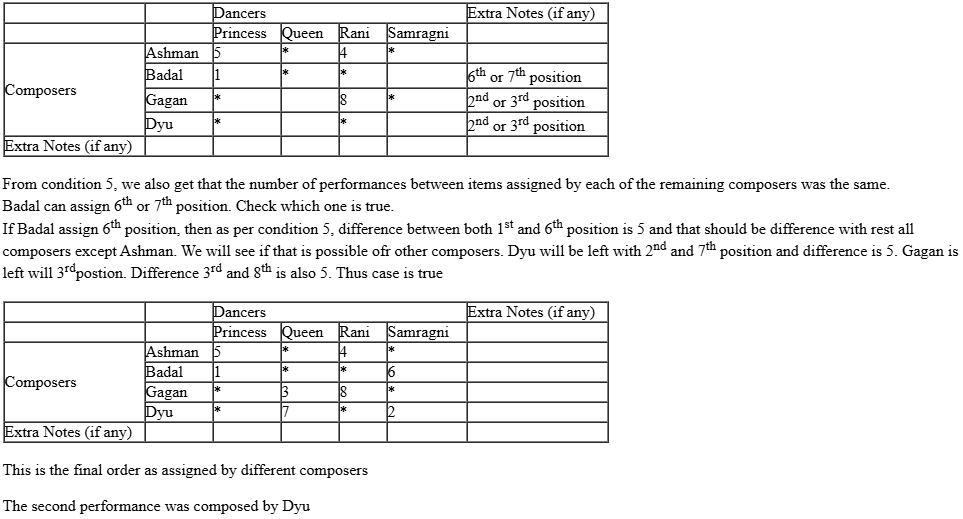
6. Which of the following is FALSE?
- Queen did not perform in any item composed by Gagan
- Samragni did not perform in any item composed by Ashman
- Rani did not perform in any item composed by Badal
- Princess did not perform in any item composed by Dyu
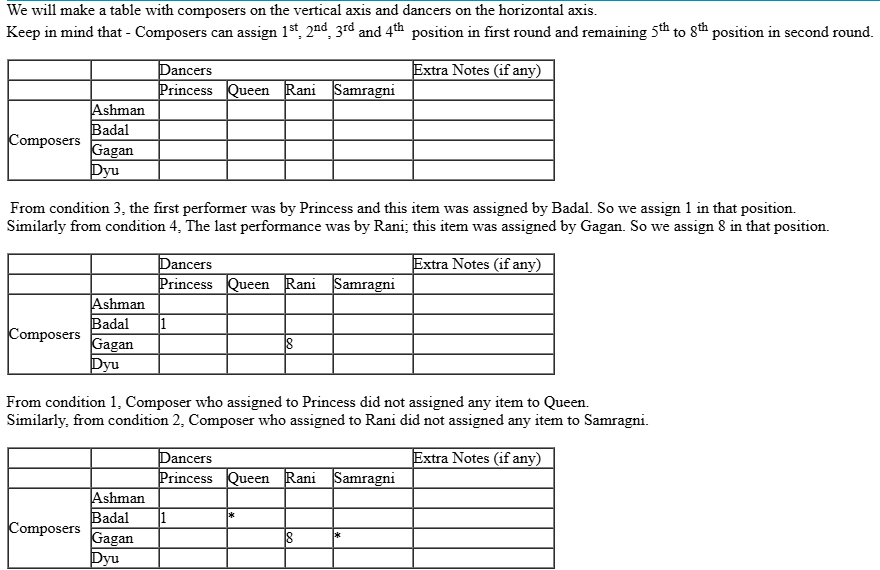
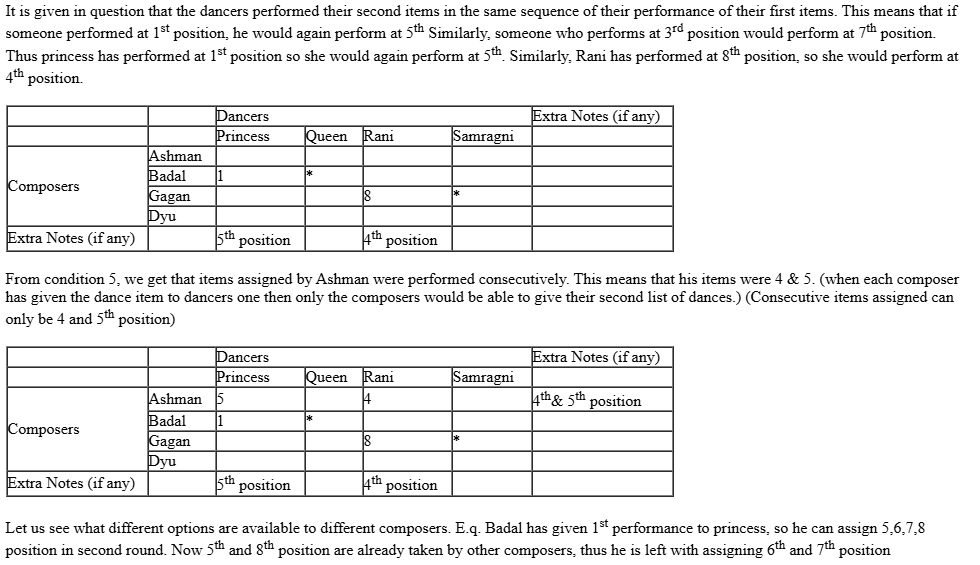
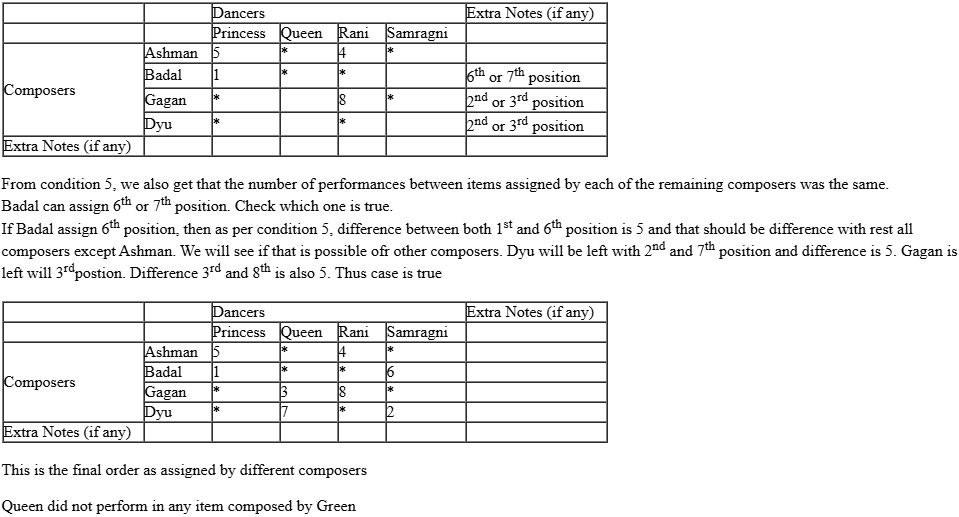
7. The sixth performance was composed by:
- Gagan
- Badal
- Ashman
- Dyu
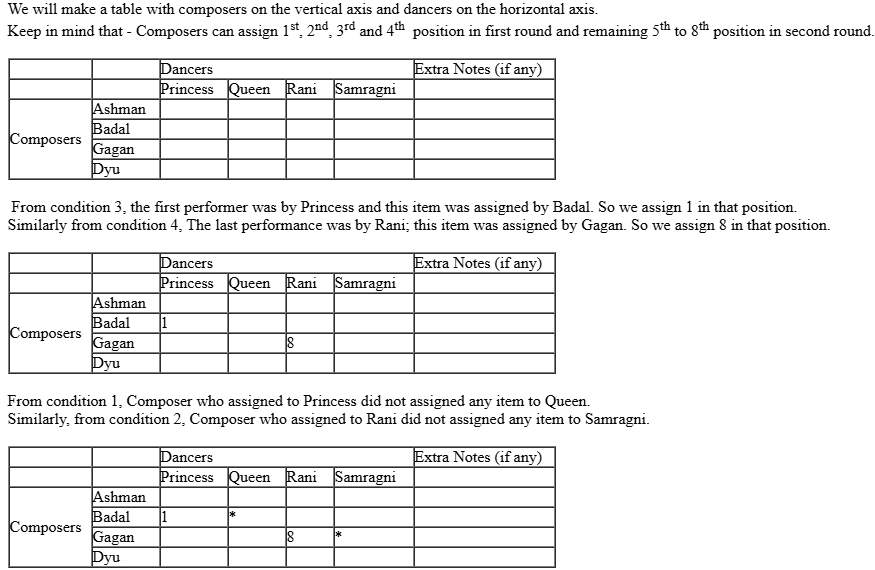
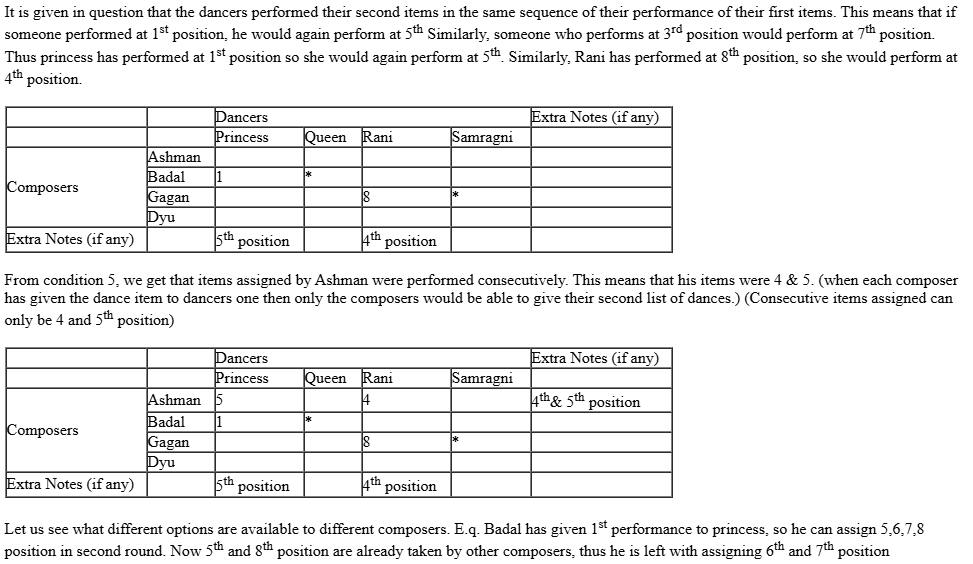
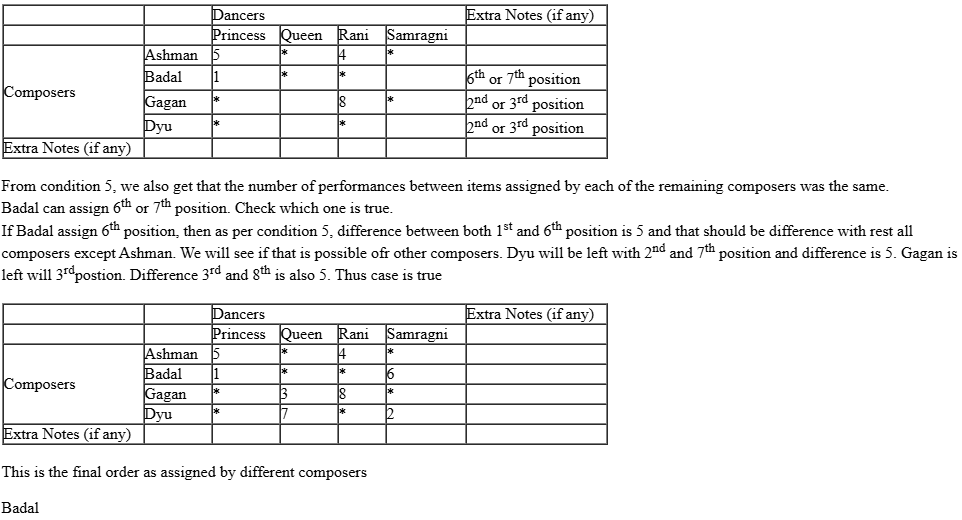
8. Which pair of performances were composed by the same composer?
- The third and the seventh
- The first and the seventh
- The first and the sixth
- The second and the sixth
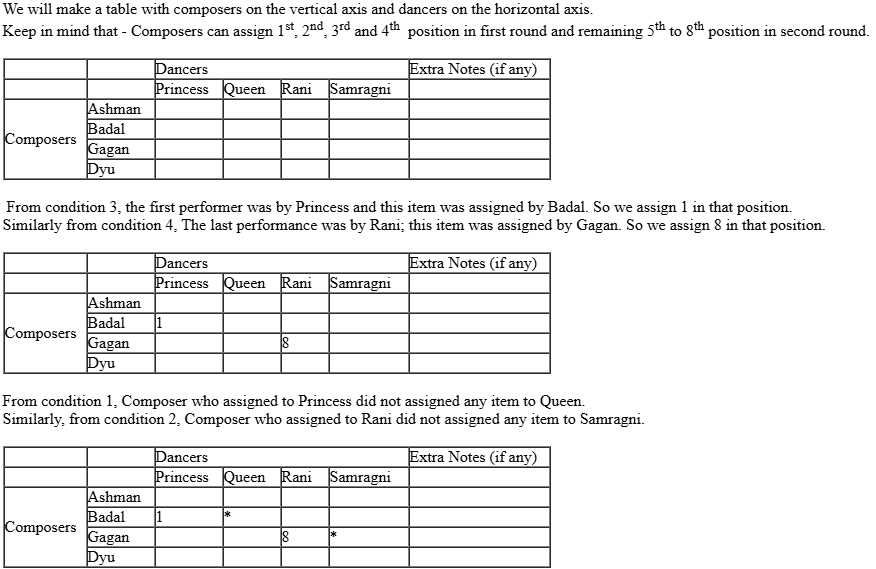

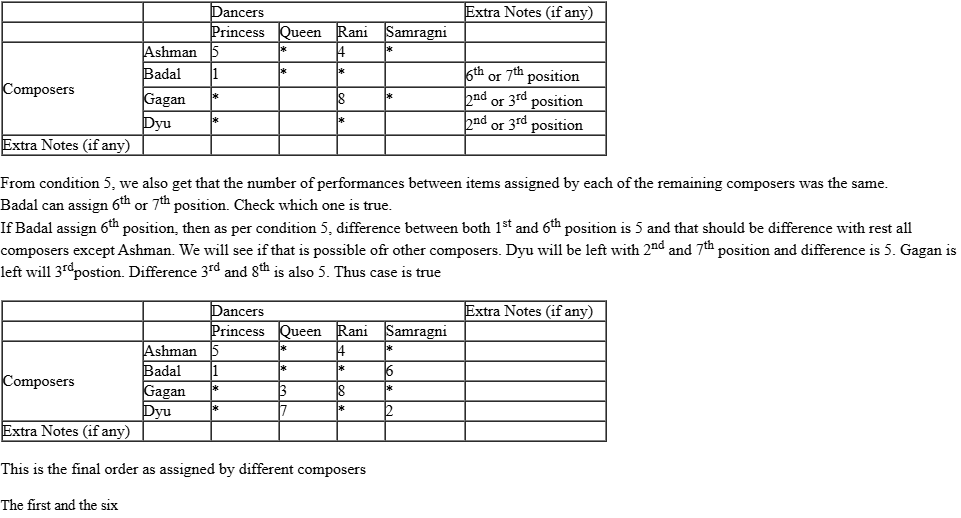
9. Which pair of performances were composed by the same composer?
- The third and the seventh
- The first and the seventh
- The first and the sixth
- The second and the sixth
The number of items atleast doubles and there are total 100 boxes each containing an item. So minimum types can be 2 as 1st prize having 1 item of type A and 2nd having 99 items of type B.
Correct Answer 5
Option B
Correct Answer 6
Option A
Correct Answer 7
Option B
Correct Answer 8
Option C
Correct Answer 9
Option B
CAT 2019 | DILR Set 3
A new game show on TV has 100 boxes numbered 1, 2, …, 100 in a row, each containing a mystery prize. The prizes are items of different types, a, b, c,… , in decreasing order of value. The most expensive item is of type a, a diamond ring, and there is exactly one of these. You are told that the number of items at least doubles as you move to the next type. For example, there would be at least twice as many items of type b as of type a, at least twice as many items of type c as of type b and so on. There is no particular order in which the prizes are placed in the boxes.
10. What is the minimum possible number of different types of prizes?
Similarly to last one, 1 item of type A then 2 of type B then 4 of type C then 8 of type D then 16 of type E then 32 of type F will sum upto 63 items. There cannot be type G because that will cross 100 item barrier. Hence 6.
11. What is the maximum possible number of different types of prizes?
There is 1 item of type A. If there are exactly 30 items of type B then there will be 60 or more type C. If 69 type C, then This is possible. If there are exactly 45 type C then there must be 2 to 22 type B only summing upto 48 to 68 items. Now Type D must have at least 90 (double of 45) items but it is not possible. Exactly 60 type D is possible if there is 1 type A, 9 type B and 30 type C. 75 of type E is also possible. You ask for the type of item in box 45. Instead of being given a direct answer, you are told that there are 31 items of the same type as box 45 in boxes 1 to 44 and 43 items of the same type as box 45 in boxes 46 to 100.
12. Which of the following is not possible?
- There are exactly 60 items of type d.
- There are exactly 30 items of type b
- There are exactly 45 items of type c
- There are exactly 75 items of type e
Now as per the additional information given in the question, there are a total of 75 boxes in which the same item is given (one in box number 45 and 31 items in 1 - 44 boxes and 43 items in 46 - 100 boxes). Now the remaining 25 items has to be maximized in terms of variety. There is 1 item of type A, so let there be 2 items of type B, 4 items of type C, 8 items of type D. Now after that if try to have 32 items of type E, the total items become more than 100. Thus there can be only 4 more types of items other than the one, which has been used in box number 45. So the total different types of items at the most can be 5.
13. You ask for the type of item in box 45. Instead of being given a direct answer, you are told that there are 31 items of the same type as box 45 in boxes 1 to 44 and 43 items of the same type as box 45 in boxes 46 to 100. What is the maximum possible number of different types of items?
- 6
- 4
- 3
- 5
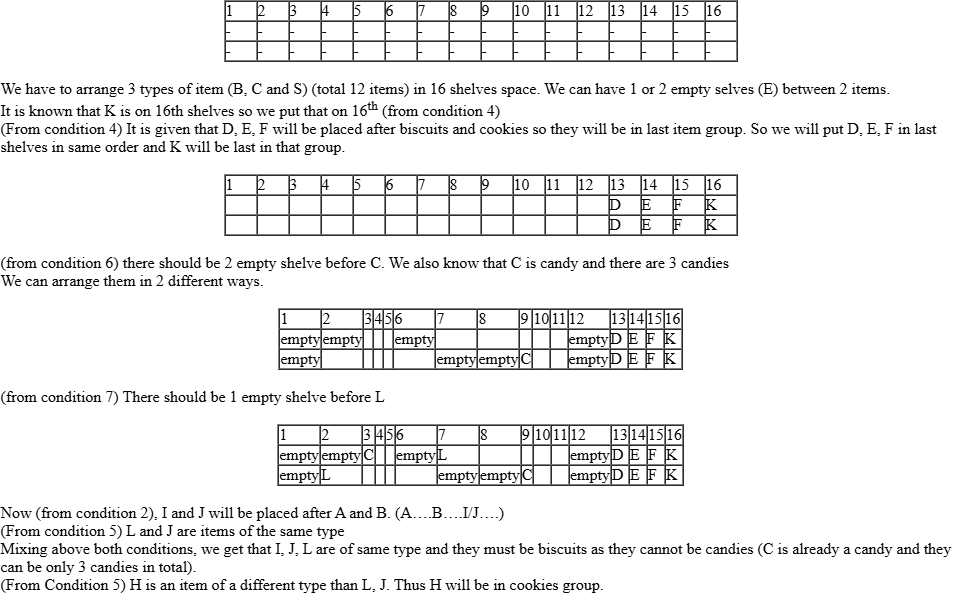

Correct Answer 10
6
Correct Answer 11
C
Correct Answer 12
Option D
Correct Answer 13
Option D
CAT 2019 | DILR Set 4
DIRECTIONS for the question: Read the information given below and answer the question that follows.
A supermarket has to place 12 items (coded A to L) in shelves numbered 1 to 16. Five of these items are types of biscuits, three are types of candies and the rest are types of savouries. Only one item can be kept in a shelf. Items are to be placed such that all items of same type are clustered together with no empty shelf between items of the same type and at least one empty shelf between two different types of items. At most two empty shelves can have consecutive numbers.
The following additional facts are known.
- A and B are to be placed in consecutively numbered shelves in increasing order.
- I and J are to be placed in consecutively numbered shelves both higher numbered than the shelves in which A and B are kept.
- D, E and F are savouries and are to be placed in consecutively numbered shelves in increasing order after all the biscuits and candies.
- K is to be placed in shelf number 16.
- L and J are items of the same type, while H is an item of a different type.
- C is a candy and is to be placed in a shelf preceded by two empty shelves.
- L is to be placed in a shelf preceded by exactly one empty shelf.
14. In how many different ways can the items be arranged on the shelves?
- 4
- 1
- 2
- 8


15. Which of the following items is not a type of biscuit?
- B
- A
- L
- G
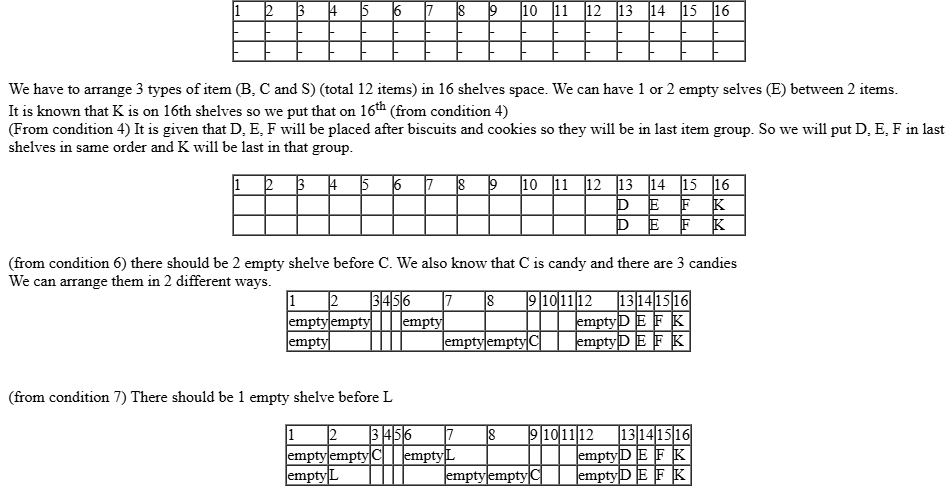
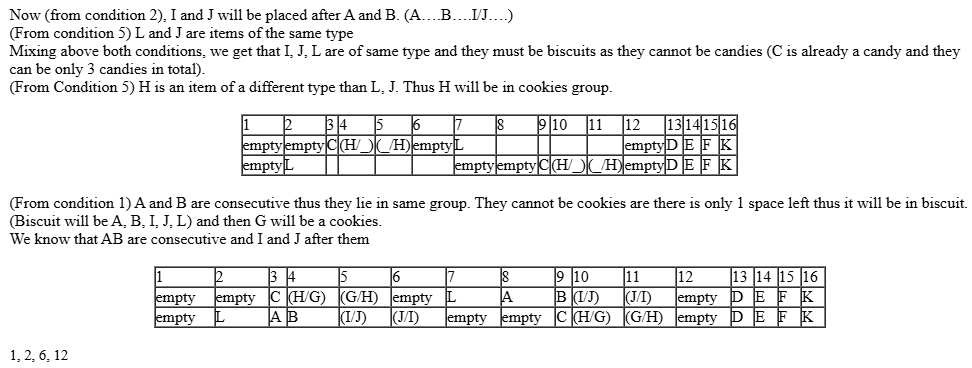
16. Which of the following can represent the numbers of the empty shelves in a possible arrangement?
- 1,7,11,12
- 1,2,8,12
- 1,2,6,12
- 1,5,6,12
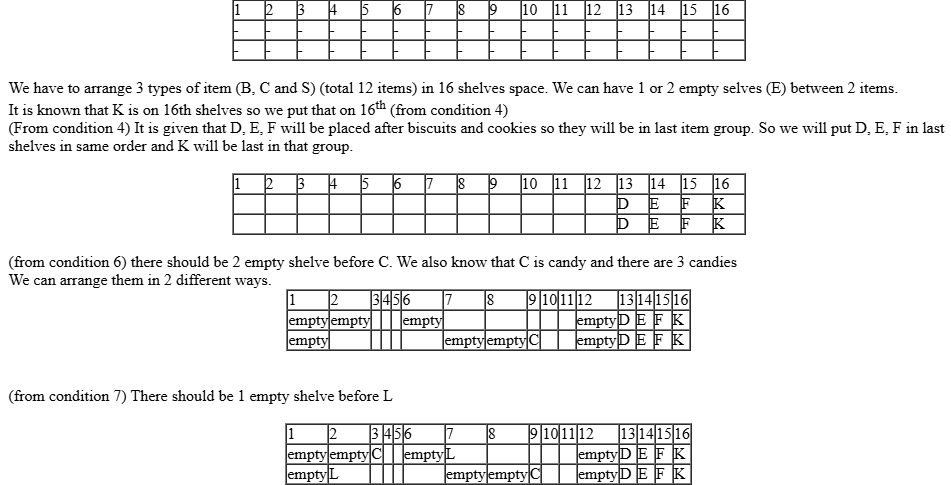
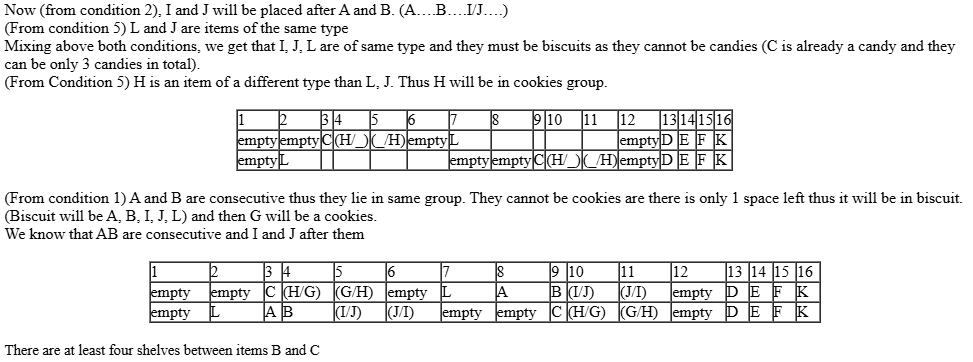
17. Which of the following statements is necessarily true?
- There are at least four shelves between items B and C.
- There are two empty shelves between the biscuits and the candies
- All candies are kept before biscuits.
- All biscuits are kept before candies.
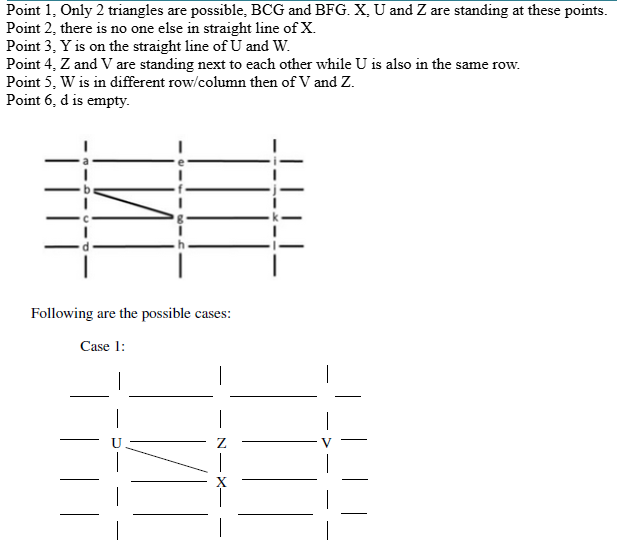
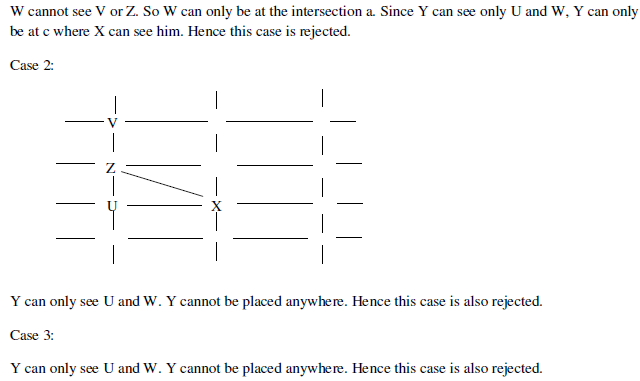
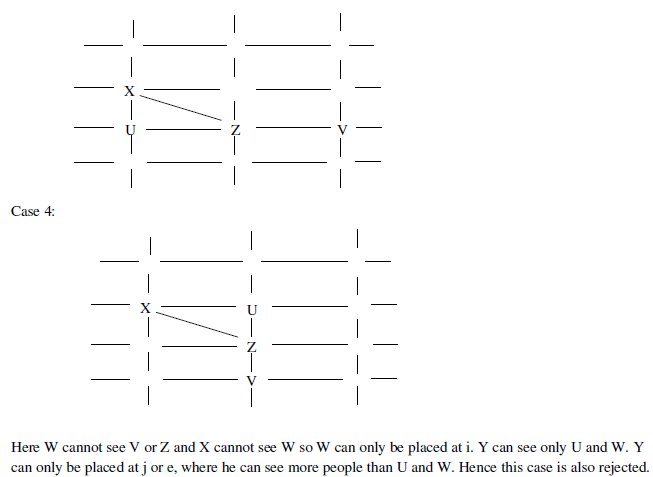
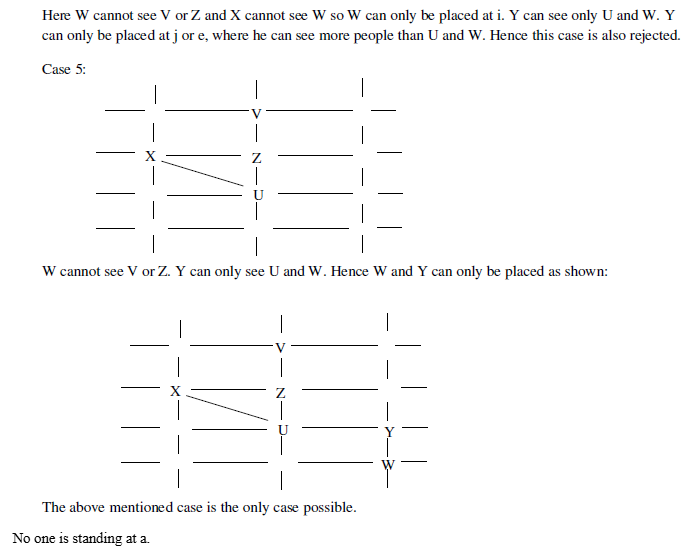
Correct Answer 14
Option D
Correct Answer 15
Option C
Correct Answer 16
Option A
Correct Answer 17
Option A
CAT 2019 | DILR Set 5
DIRECTIONS for the question: Go through the graph and the information given below and answer the question that follows.
The figure below shows the street map for a certain region with the street intersections marked from a through I. A person standing at an intersection can see along straight lines to other intersections that are in her line of sight and all other people standing at these intersections. For example, a person standing at intersection g can see all people standing at intersections b, c, e, f, h, and k. In particular, the person standing at intersection g can see the person standing at intersection e irrespective of whether there is a person standing at intersection f.
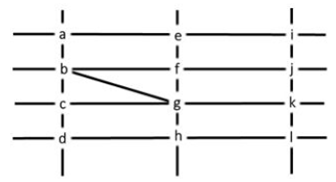
Six people U, V, W, X, Y, and Z, are standing at different intersections. No two people are standing at the same intersection.
The following additional facts are known.
- X, U, and Z are standing at the three corners of a triangle formed by three street segments.
- X can see only U and Z.
- Y can see only U and W.
- U sees V standing in the next intersection behind Z.
- W cannot see V or Z.
- No one among the six is standing at intersection d.
18. Who is standing at intersection a?
- No one
- Y
- V
- W


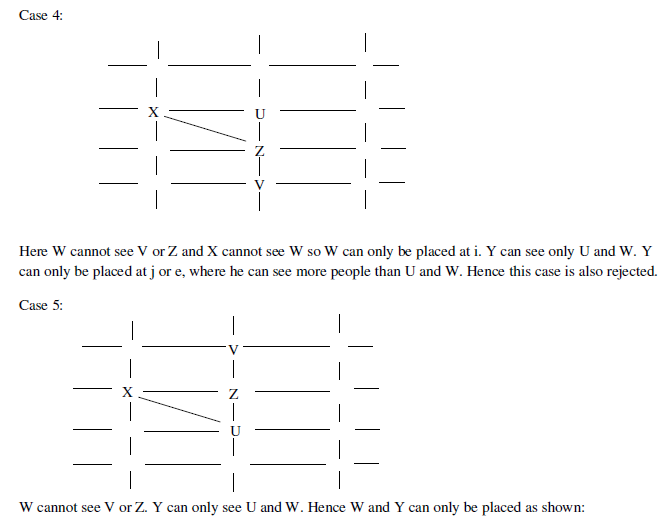

19. Who can V see?
- U, W and Z only
- Z only
- U and Z only
- U only
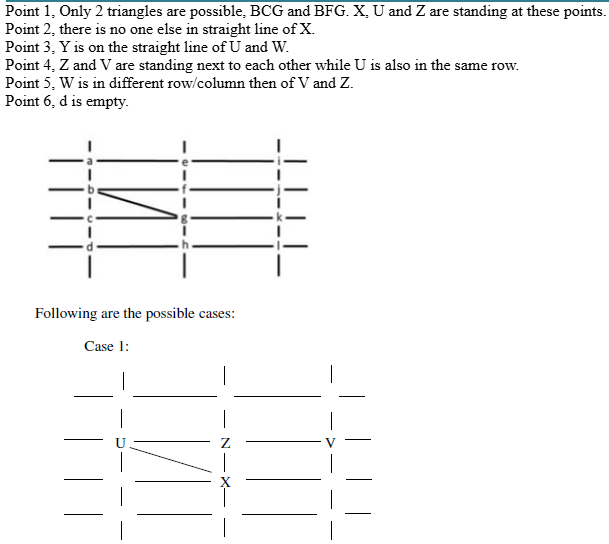
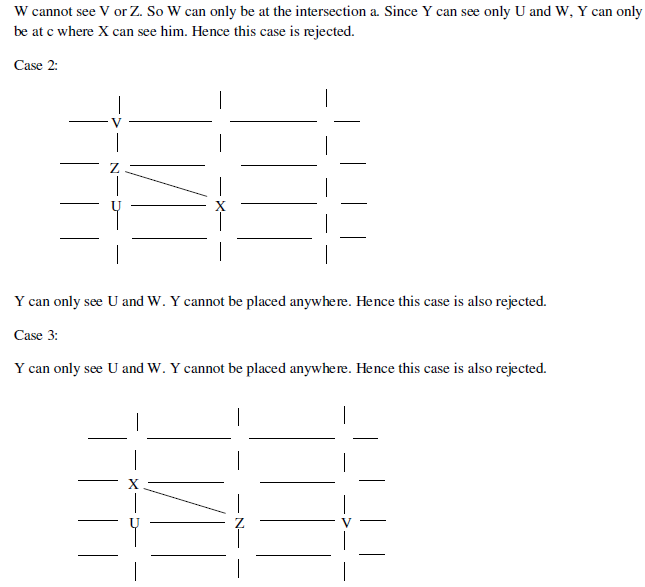
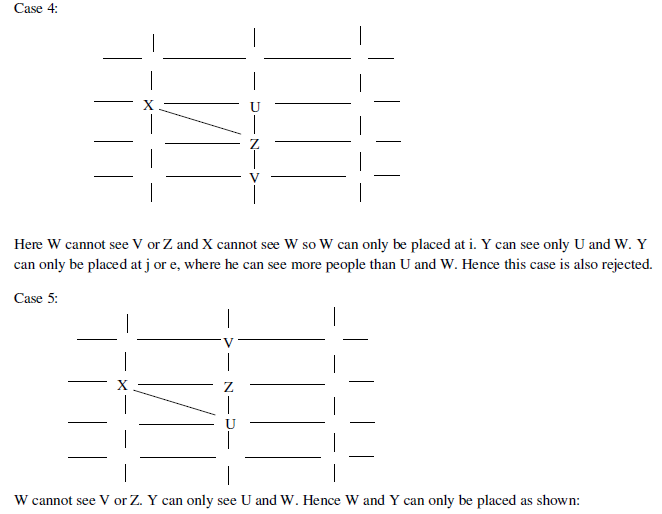
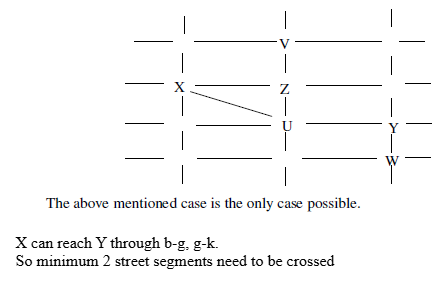
20. What is the minimum number of street segments that X must cross to reach Y?
- 1
- 4
- 3
- 2

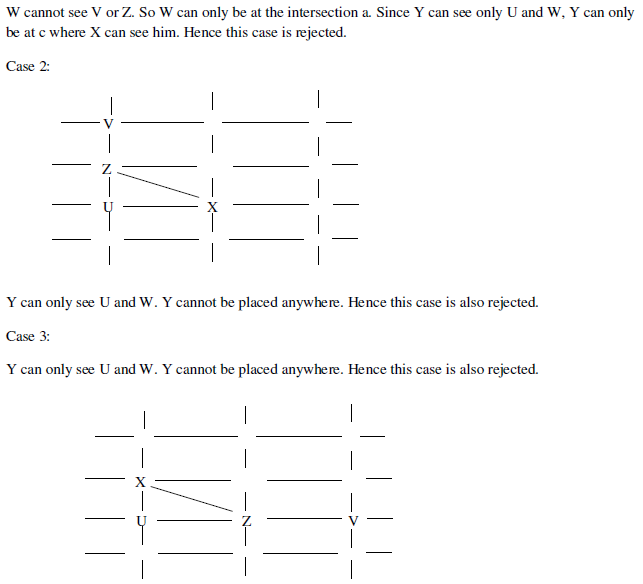

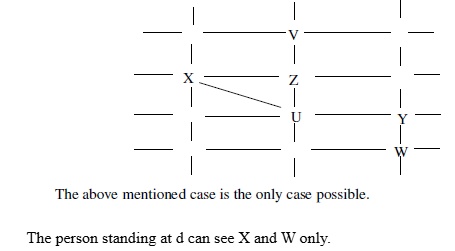
21. Should a new person stand at intersection d, who among the six would she see?
- U and Z only
- V and X only
- W and X only
- U and W only


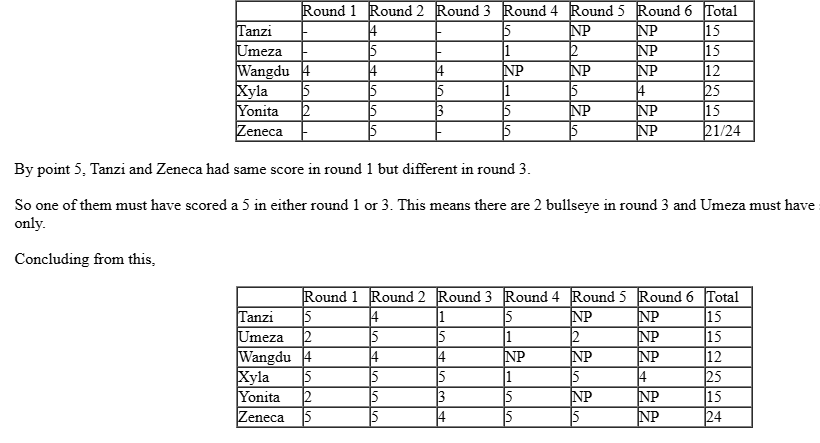
Correct Answer 18
Option C
Correct Answer 19
Option D
Correct Answer 20
Option C
Correct Answer 21
Option A
CAT 2019 | DILR Set 6
DIRECTIONS for the question: Go through the graph and the information given below and answer the question that follows.
Six players – Tanzi, Umeza, Wangdu, Xyla, Yonita and Zeneca competed in an archery tournament. The tournament had three compulsory rounds, Rounds 1 to 3. In each round every player shot an arrow at a target. Hitting the centre of the target (called bull’s eye) fetched the highest score of 5. The only other possible scores that a player could achieve were 4, 3, 2 and 1. Every bull’s eye score in the first three rounds gave a player one additional chance to shoot in the bonus rounds, Rounds 4 to 6. The possible scores in Rounds 4 to 6 were identical to the first three.
A player’s total score in the tournament was the sum of his/her scores in all rounds played by him/her. The table below presents partial information on points scored by the players after completion of the tournament. In the table, NP means that the player did not participate in that round, while a hyphen means that the player participated in that round and the score information is missing.

The following facts are also known.
- Tanzi, Umeza and Yonita had the same total score.
- Total scores for all players, except one, were in multiples of three.
- The highest total score was one more than double of the lowest total score.
- The number of players hitting bull’s eye in Round 2 was double of that in Round 3.
- 5.Tanzi and Zeneca had the same score in Round 1 but different scores in Round 3.
22. What was the highest total score?
- 25
- 21
- 24
- 23
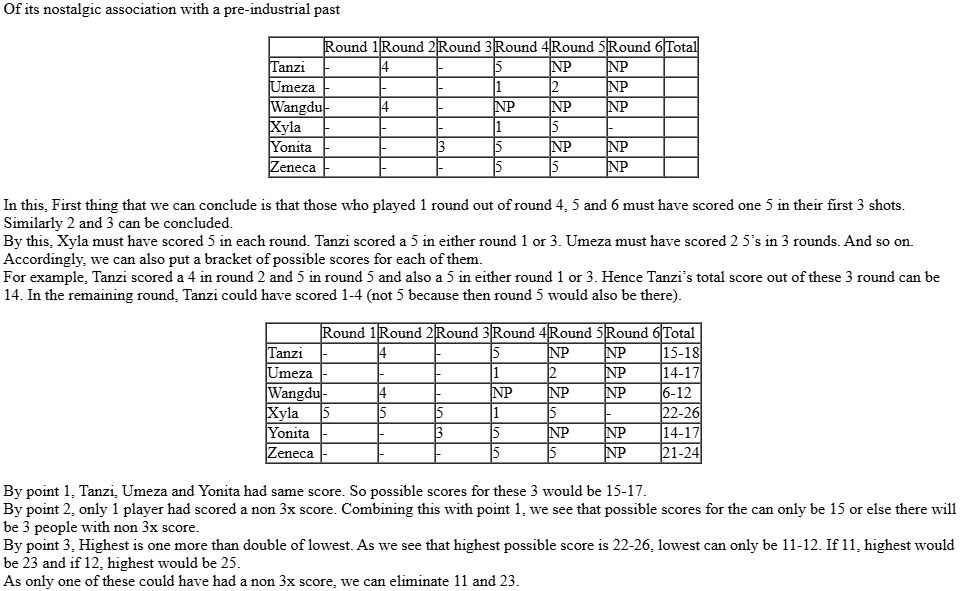
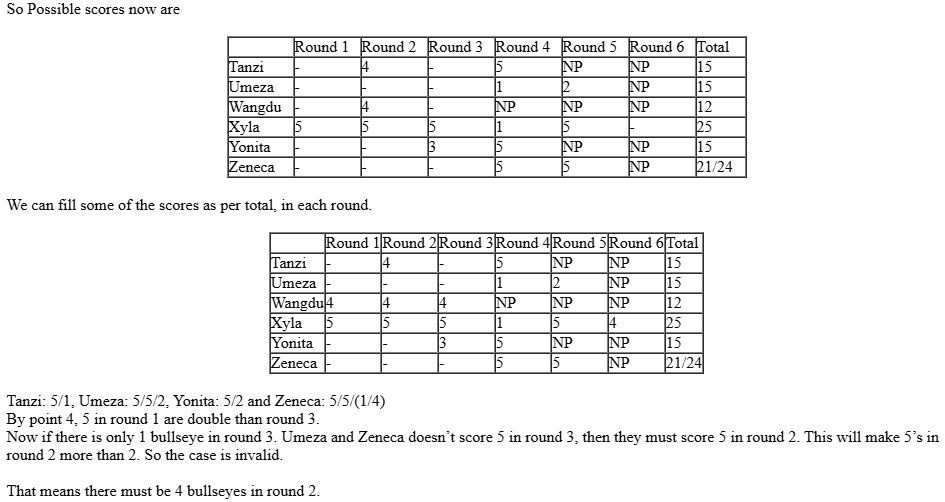
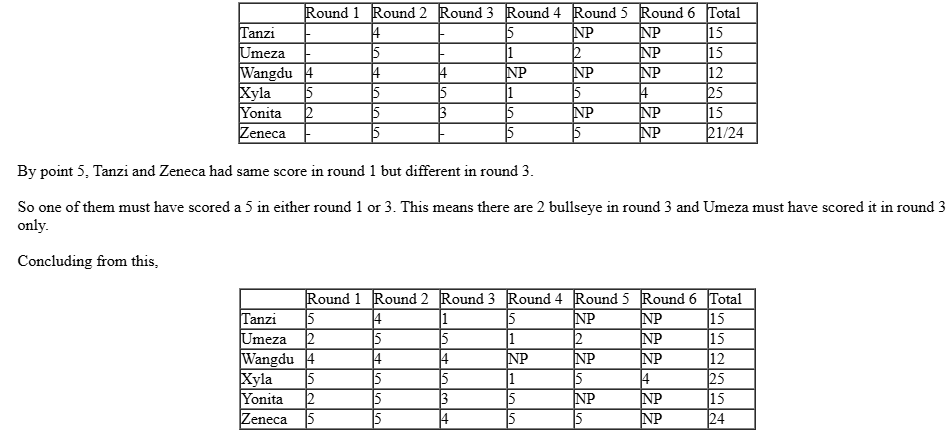
23. What was Zeneca's total score?
- 21
- 22
- 23
- 24
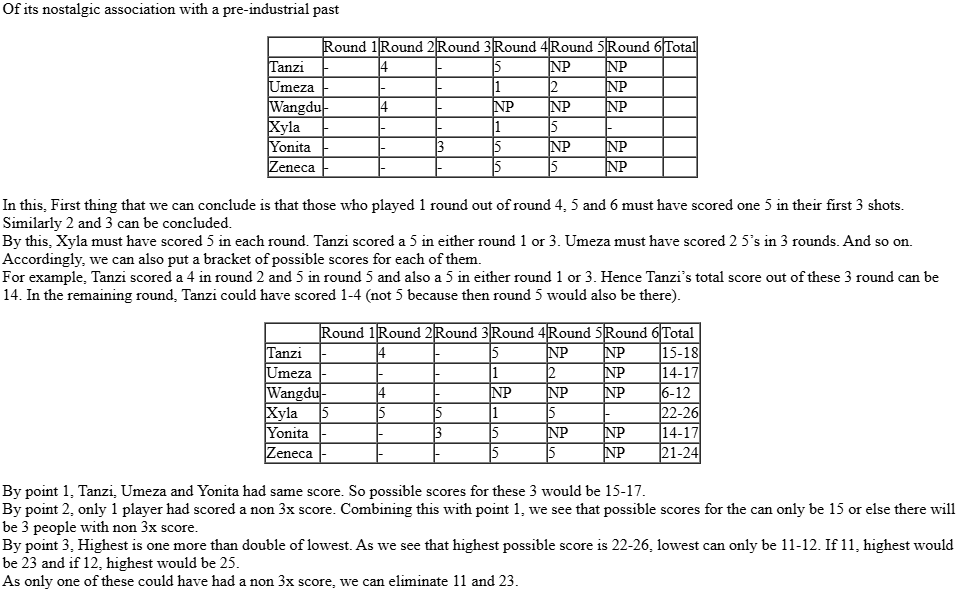
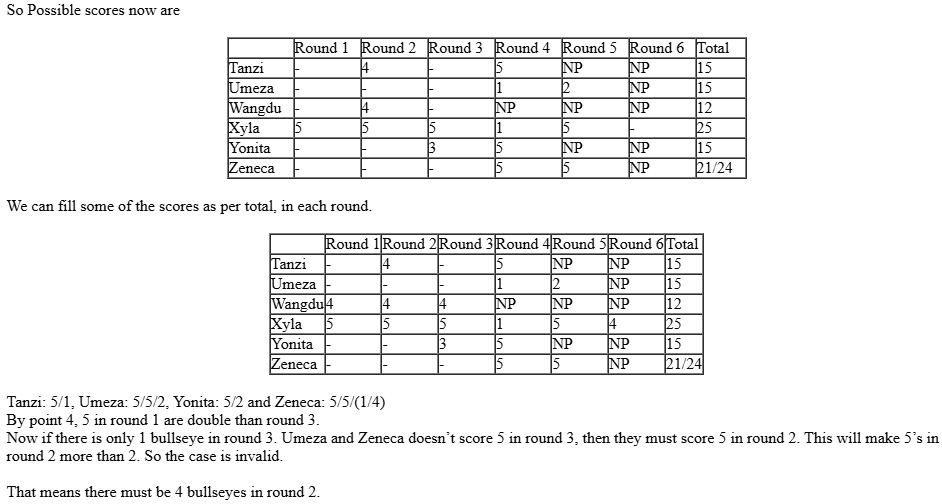
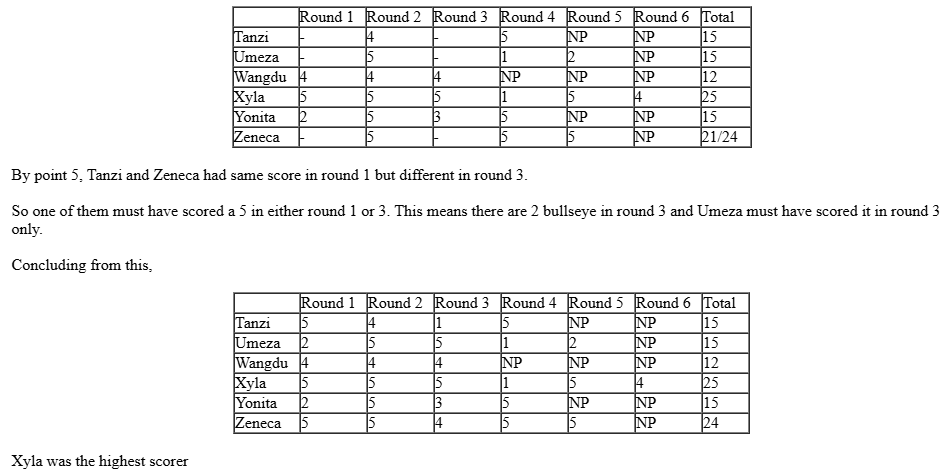
24. Which of the following statements is true?
- Xyla’s score was 23
- Xyla was the highest scorer
- Zeneca was the highest scorer
- Zeneca’s score was 23
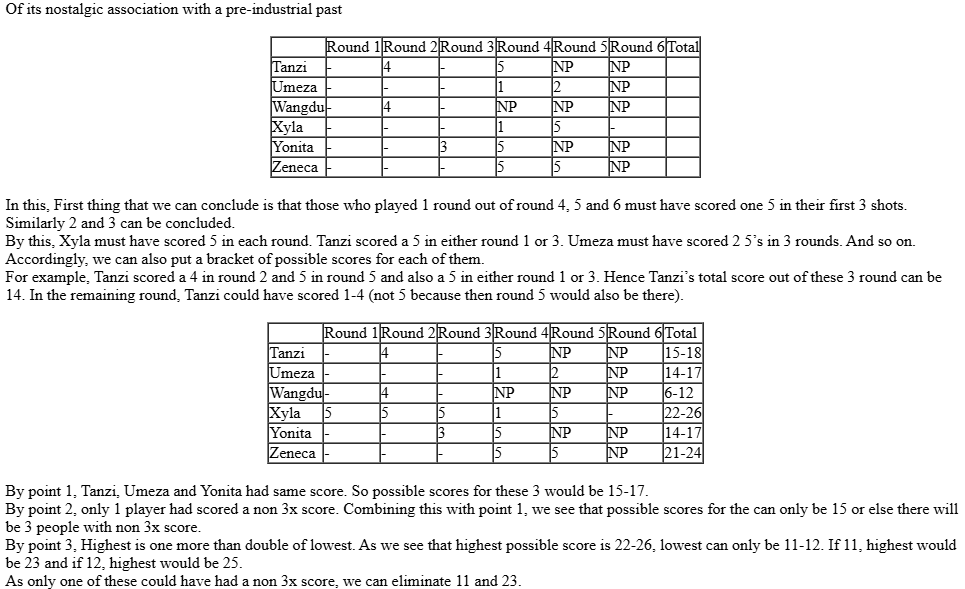
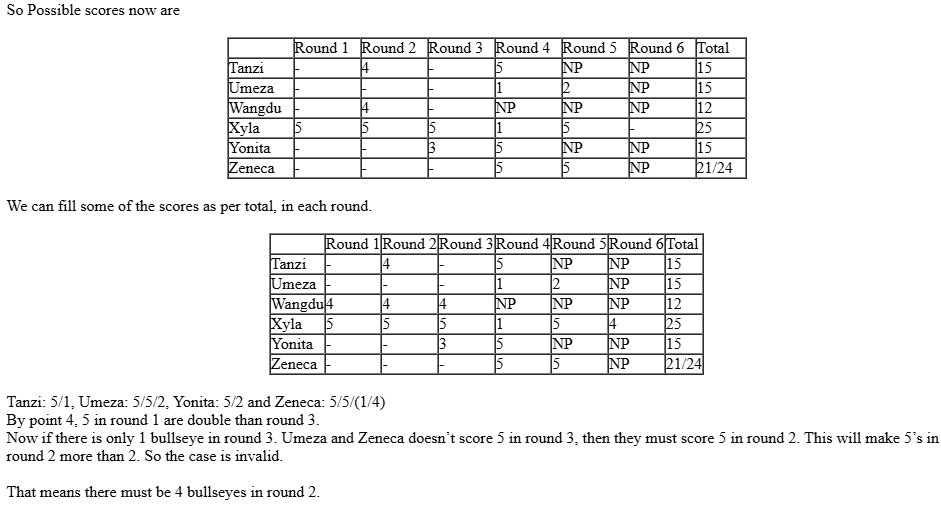
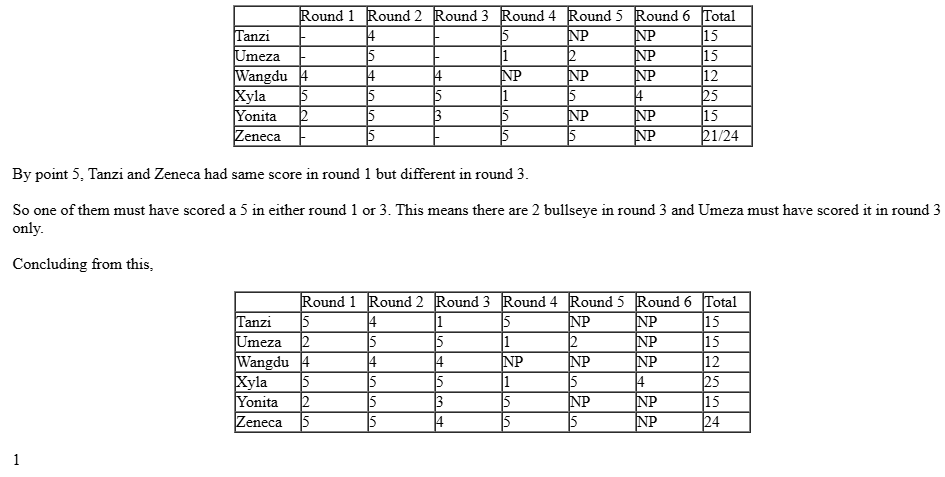
25. What was Tanzi's score in Round 3?
- 5
- 4
- 1
- 3
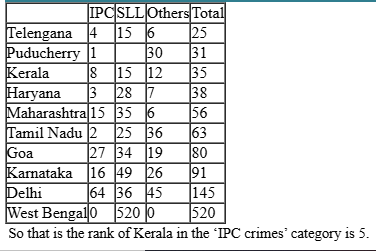
Correct Answer 22
Option D
Correct Answer 23
Option B
Correct Answer 24
Option C
Correct Answer 25
Option A
CAT 2019 | DILR Set 7
DIRECTIONS for the question: Analyse the graph/s given below and answer the question that follows.
The Ministry of Home Affairs is analysing crimes committed by foreigners in different states and union territories (UT) of India. All cases refer to the ones registered against foreigners in 2016.
The number of cases – classified into three categories: IPC crimes, SLL crimes and other crimes – for nine states/UTs are shown in the figure below. These nine belong to the top ten states/UTs in terms of the total number of cases registered. The remaining state (among top ten) is West Bengal, where all the 520 cases registered were SLL crimes.

The table below shows the ranks of the ten states/UTs mentioned above among ALL states/UTs of India in terms of the number of cases registered in each of the three category of crimes. A state/UT is given rank r for a category of crimes if there are (r‐1) states/UTs having a larger number of cases registered in that category of crimes. For example, if two states have the same number of cases in a category, and exactly three other states/UTs have larger numbers of cases registered in the same category, then both the states are given rank 4 in that category. Missing ranks in the table are denoted by *.
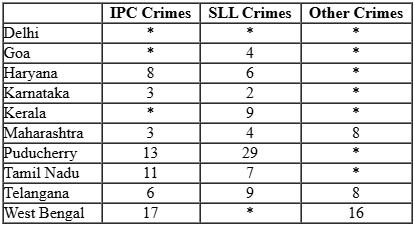
26. What is the rank of Kerala in the ‘IPC crimes’ category? (type in numerical value)

27. In the two states where the highest total number of cases are registered, the ratio of the total number of cases in IPC crimes to the total number in SLL crimes is closest to
- 11:10
- 19:20
- 1:9
- 3:2
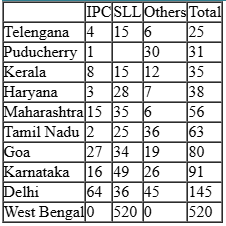
28. Which of the following is DEFINITELY true about the ranks of states/UT in the ‘other crimes’ category?
i) Tamil Nadu: 2
ii) Puducherry: 3
- both i) and ii)
- only i)
- only ii)
- neither i) , nor ii)

29. What is the sum of the ranks of Delhi in the three categories of crimes? (type in numerical value)

Correct Answer 26
Option C
Correct Answer 27
Option A
Correct Answer 28
Option B
Correct Answer 29
Option C
CAT 2019 | DILR Set 8
DIRECTIONS for the question: Analyse the graph/s given below and answer the question that follows.
Five vendors are being considered for a service. The evaluation committee evaluated each vendor on six aspects – Cost, Customer Service, Features, Quality, Reach, and Reliability. Each of these evaluations are on a scale of 0 (worst) to 100 (perfect). The evaluation scores on these aspects are shown in the radar chart. For example, Vendor 1 obtains a score of 52 on Reliability, Vendor 2 obtains a score of 45 on Features and Vendor 3 obtains a score of 90 on Cos
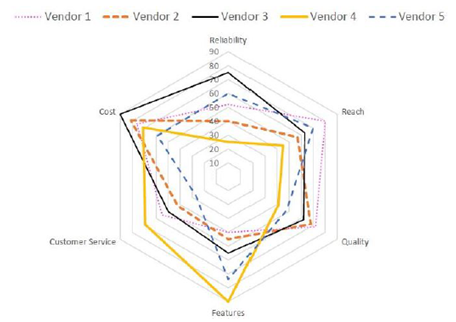
30. On which aspect is the median score of the five vendors the least?
- Quality
- Cost
- Customer Service
- Reliability

31. A vendor's final score is the average of their scores on all six aspects. Which vendor has the highest final score?
- Vendor 1
- Vendor 2
- Vendor 4
- Vendor 3
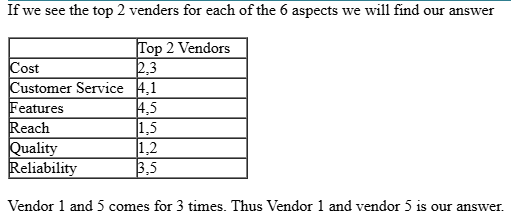
32. List of all the vendors who are among the top two scorers on the maximum number of aspects is:
- Vendor 2 and Vendor 5
- Vendor 1 and Vendor 5
- Vendor 1 and Vendor 2
- Vendor 2, Vendor 3 and Vendor 4
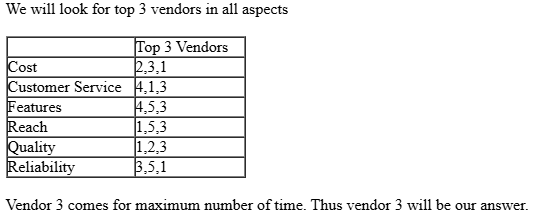
33. List of all the vendors who are among the top three vendors on all six aspects is:
- Vendor 1
- None of the Vendors
- Vendor 3
- Vendor 1 and Vendor 3
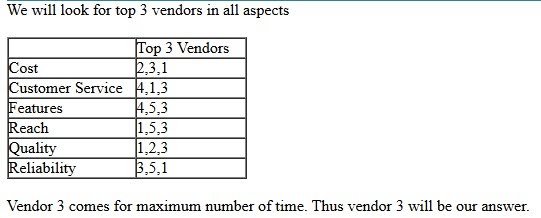
Correct Answer 30
Option D
Correct Answer 31
Option B
Correct Answer 32
Option C
Correct Answer 33
Option C
















